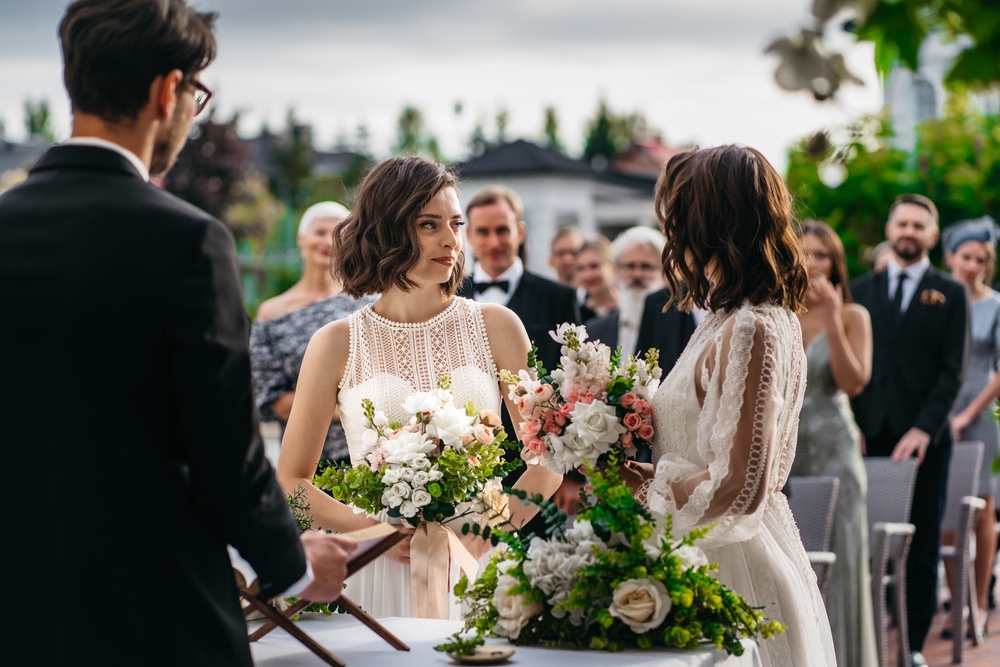Down the Aisle: Who Walks Who in a Same-Sex Wedding?

In traditional weddings, the father walks the bride down the aisle to the groom. This custom probably began in the days when women were considered property, not individual human beings with their own rights. In a way, the father transferred ownership of the daughter to the husband. Thankfully, this custom has evolved. Today, this custom is more of a sign of support and love, not one of giving away property. With same-sex weddings, this custom may be very problematic, but there are solutions.
Brides Have Choices
Some brides choose to walk down the aisle with both parents or other family members. Many brides are also choosing to walk down the aisle alone. Some couples are even choosing to walk down the aisle together after a first look. The bride’s children, whether adults or not, could be another option. Mentors or stepparents have even stepped into the role, as have canine companions. The bride has many options for her processional. More brides are even choosing more modern music for their long walk down the aisle instead of the traditional “Here Comes the Bride.”
How To Handle 2 Brides or 2 Grooms?
Same-sex weddings often have to take a non-traditional approach to the wedding customs of old. Many LGBTQ couples have tense family situations or want to avoid heteronormative wedding rituals. Same-sex couples are finding ways around the processional by considering their own values, much like traditional couples. The rulebook for weddings has been kicked out the door, allowing couples to do what feels right to them. Your processional can be unique to your situation. Consider your situation and work it out, so each of you is comfortable with your decision.
Which Side Does Each Person Choose?
Did you know that brides traditionally stand on the left side of the altar to allow the groom to have his sword arm free in the event of an attack? It just became a tradition for brides to stand on the left. Although in Jewish weddings and some military or police weddings, brides do stand on the right side of the altar. Today, it’s recommended to choose the side that takes the best pictures or makes sure you can see your partner without the sun in your eyes. In other words, do what makes you feel the best.
Handling a Mixed Wedding Party
Traditionally, the bride’s party pairs up with the groom’s party to walk together down the aisle as part of the processional. When you have mixed pairs on each side, how can you match them up? Maybe the better question is- “do you have to match them up?” Your wedding party could walk together in pairs. Each person in the wedding party could walk solo down the aisle. Your wedding party could stand at the altar waiting for you and your partner. You don’t even have to have a wedding party. Any of your guests could sign the marriage license as witnesses.
Revamp Your Wedding Ceremony and Make It Unique
Wedding traditions keep changing. Before the pandemic, large weddings were common. Now, more couples are opting for micro-weddings. It’s not just about social distancing anymore. There’s more intimacy and personalization with a smaller wedding. You may save a lot of money, too. Another emerging trend is a reverse wedding. That’s where your guests party at the reception first. The ceremony is at the end of the reception.
Do What Makes You and Your Partner Happy
Your wedding day is all about you and your significant other. Don’t be swayed by those who might be disappointed that you’re not catering to the traditional wedding norms. Take the traditions that are meaningful to you both to have the wedding of your dreams.














